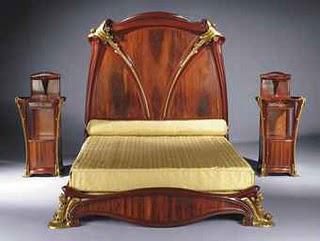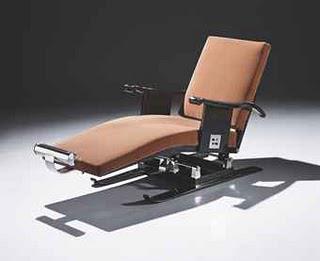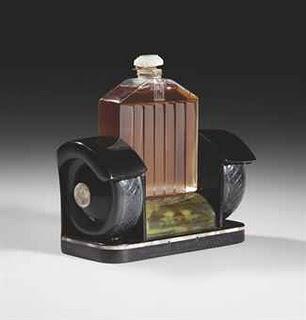Last week Christie’s Paris held the highly anticipated sale of the Chateau Gordon Collection. The objects, like the prices, were out of this world. The house said that it was “one of the finest private collections of early 20th century decorative arts and design to ever be offered at auction.” The sale, which included 890 lots was estimated to bring in somewhere between 35 and 50 million euros, with the end result coming close to 42 million euros. The sale featured not just 20th century decorative arts but also medieval paintings, arms, and paper items such as books and magazines.
I must admit that I began to salivate as I flipped through the catalogues. The furniture included was by some of the most important names in early 20th century decorative arts such as Majorelle, Ruhlmann, Gray, Dunand, Chareau, Adnet, Legrain, Herbst, Mallet-Stevens, and the list goes one. But not only were their works present, but the BEST examples of their works. Objects which were prototypes, unique commission for private clients (not just private but VERY important like Madeline Vionnet, Jacques Doucet, and the Maharaja of Indore), and even personal objects from their own apartments. The museum referred to these pieces as “national treasures”. Just to give you some examples: Eileen Gray’s Black Brick Screen, similar to the one that she designed for Suzanne Talbot, which came from her own apartment and the Bibendum chair, Jean Dunand’s “Palmiers” Paneling Suite (a suite of lacquered wood wall paneling, part-combed lacquer in gray, silver and gold, applied with metal panels with engraved black-lacquer, carved with geometric motifs and arranged as stylized palms, the whole assembling to create the four walls of a rectangular room, fitted with two pairs of doors, a pair of sliding doors, and recessed illumination to the upper skirting), Gustave Miklos’s 'Young Woman', a black-brown patinated bronze sculpture (Miklos was discovered by Jacques Doucet and created numerous objects for his apartment) and a Louis Majorelle 'Aux Nénuphars' double bed and pair of matching bedside cabinets made of amaranth, mahogany and gilt-bronzes. There were so many wonderful things in this sale that it is impossible to name a favorite. However a series of six panels by René Buthaud in verre églomisé and part-decorated with gold and silver leaf, within patinated brass frames (1935) caught my eye.

Louis Majorelle, Bed "Aux Nenuphars", 1905. Image courtesy of Christie's
The sale resulted in 13 records being set for artists at auction, including for Ruhlmann (as if his things could get any more expensive). One of his top lots was a “Chaise longue on skis”, which brought in $4,067,997. This unique chair was created for the Maharaja of Indore, who had the most incredible collection of Art Deco furniture, including some very important Ruhlmann pieces designed especially for him. The Gray screen went for $1,921,117, the “Palmiers” Panels for $3,113,828, Young Woman sculpture for $1,921,117, the Majorelle double-bed brought in $1,650,769. While I can go on and on, you get the idea my dear reader.

Emile-Jacques Ruhlmann, Chaise-longue aux skis dite du maharadjah, 1929. Image courtesy of Christie's
Aside from the furniture and objects, the sale featured an incredible collection of perfume bottles. These bottles are some of the most beautiful and unusual that I have ever seen. Some of them still had the perfume inside which makes me believe that the original owner admired them for the beauty even more than the heavenly scents which spilled out of them. The perfume bottles were designed by René Lalique, Louis Sue, Jean-Lambert Rucki, Jean-Michel Frank and Baccarat. In other words, the greatest talents of the century also lent their hand to these miniature sculptures. The bottles are the upmost in luxury. For example, a glass bottle by Marcel Guerlain simulating the Rolls Royce radiator grille, on black and olive-green Bakelite and celluloid stand, from 1926, went for $31,060. No bargains in this department either.
Marcel Guerlain, "Rolls Royce" Perfume Bottle, 1926. Image courtesy of Christie's.
The five auction catalogues accompanying the sale belong on the book shelf of any design enthusiast and should really be considered a great reference guide to the period. Aside from the beautiful illustrations they are filled with biographies of all the designers featured. Also part of the sale were important period books, journals, and photographs. Where and when are we ever going to see things like this again?Prior to this sale the collection was housed in the Chateau Gordon near Grasse. In 2003 the Museum of Decorative Arts and Modernity, which was housed in the Chateau, was open to the public. Each room of the castle focused on another designer and presented the interior in the same manner as it was envisioned by the designer. While the museum is now closed, the garden will re-open in the spring. However the website for the museum is still available online and one can “virtually” visit some of the rooms of the castle and see these pieces in their “natural” habitat. There is also a section dedicated to artist biographies which is incredibly detailed and, I think, very helpful.
From my understanding, additional items from the collection, perhaps of lesser importance will be featured in a general sale of 20th century decorative arts come this June. What I heard from people who saw this sale, was that it was simply magnificent and that it is probably the last time that such a sophisticated collection of 20th century decorative arts will be on the market. The hype surrounding this sale probably parallels that of the Yves Saint Laurent sale in 2009, also at Christie’s.
17,000 people in total visited the preview. For those who want to read about the mania that surrounded this sale, you can still view the blog, set-up by the auction house, detailing all of the event with photos of the ridiculous queues of people lines up to enter the Palais de Tokyo, the venue on the Ave du Président Wilson, where the viewing took place. It is a mad, mad world and we all just live in it!

